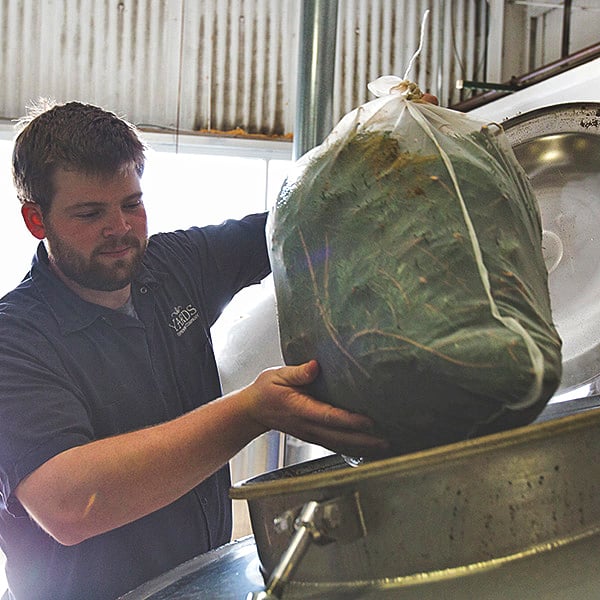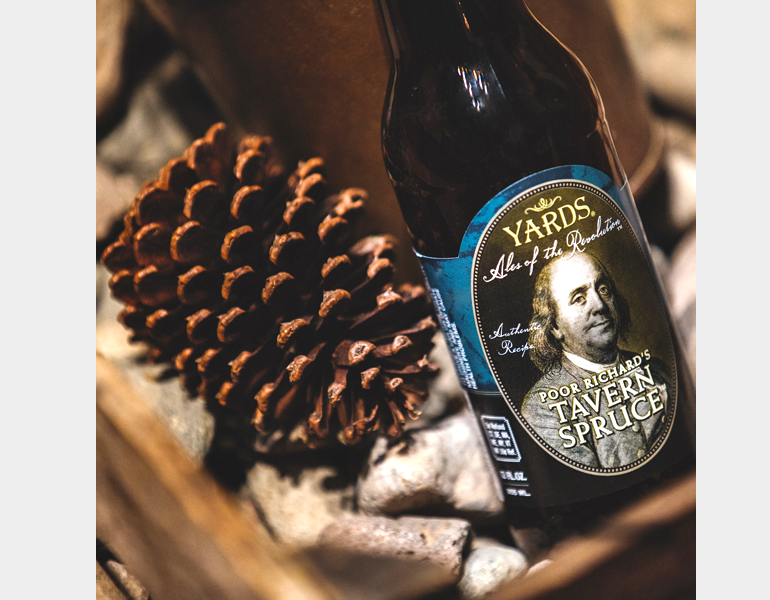Start 14-Day Trial Subscription
*No credit card required

A History of Spruce Beer
The array of possible hop aromas and flavors seems nearly infinite, but in America, pine is an evergreen contender for most widely recognizable. It’s unmistakable, and invigorating.
The tree itself is one of the most important commercial timber types in the land, as a source of wood pulp for paper, building and of course, Christmas trees. A close relative of the pine tree is the spruce tree, which boasts similar usage capabilities running the gamut of man’s most basic needs, from construction and musical (tonewood) to medicinal – when boiled, fresh shoots are a natural source of vitamin C.
It’s this last use that we’re most focused on, because amongst the kinds of beverages that can be brewed up with spruce, beer is one of the most common. In fact, there’s even a species of spruce with a beer-related name: Picea breweriana, known colloquially as Brewer’s spruce. But nothing is ever that easy – it’s supposedly pure coincidence, as the rare spruce varietal was named for renowned botanist William Henry Brewer. Then again, as one familiar with the region, he may have been aware of spruce’s brew-ability. After all, he’s got a mountain in the Sierra Nevada range named after him…
 Coincidence or not, spruce beer has been around for quite some time. Depending on who you ask, it was either first made by indigenous North Americans, or pre-European Scandinavians – Vikings purportedly brewed it for fertility and strength in battle. Of course, it’s quite likely both have been brewed for millennia, as beer has a way of fermenting itself, whether intentional or not. And it wouldn’t take much to make a spruce infusion, just some needles in a puddle.
Coincidence or not, spruce beer has been around for quite some time. Depending on who you ask, it was either first made by indigenous North Americans, or pre-European Scandinavians – Vikings purportedly brewed it for fertility and strength in battle. Of course, it’s quite likely both have been brewed for millennia, as beer has a way of fermenting itself, whether intentional or not. And it wouldn’t take much to make a spruce infusion, just some needles in a puddle.
Sailing culture spread spruce beer around the globe, largely for its reputed ability to stave off scurvy. Here, it's pictured being sold in Jamaica.
To clarify, spruce beer isn’t always alcoholic. It just needs to be flavored with the buds, needles or essence of spruce trees. Though opinions vary from source to source, it’s likely that Native Americans were more concerned with spruce infusions, and that the alcoholic aspect of brewing spruce was a Colonial creation. When spruce is boiled its vitamin C content degrades, which would significantly reduce its efficacy at fending off scurvy.
So, tea first and beer second, but only a few steps separate the two, and once spruce caught on it was spread around the world by European sailors. Many great explorers turned to spruce beer in times of desperation, to stave off scurvy. In 1536, Jacques Cartier learned of the method from native St. Lawrence Iriquois, saving his troops. The recipe he used was later shown to produce a tea with 50 mg of vitamin C per 100 grams. For adults, the daily recommended intake is 75 milligrams for women and 100 mg for men.
On Captain James Cook’s 1784 voyage to the Pacific, brewing spruce beer was a full-time gig.
“Two of our men were employed in brewing spruce beer; while others filled the water-casks, collected grass for the cattle and cut wood. ... Besides fish, we had other refreshments in abundance. Scurvy-grass, celery and portable soup were boiled every day with the wheat and pease; and we had spruce beer for our drink. Such a regimen soon removed all seeds of the scurvy from our people, if any of them had contracted it. But indeed, on our arrival here, we only had two invalids in both ships.”
Depending on who you ask, there are 35 different species of spruce, which can impart flavors ranging from resinous and piney to floral, citrusy, fruity and cola-like. There is a Norway spruce varietal in western Sweden that is said to be 9,550 years old. At that age, Old Tjikko, as it’s known, would be the world’s oldest tree. In brewing, Sitka spruce, found in the coastal American northwest is the most widely favored.
In judging, there is no set spruce beer category. For BJCP judging purposes, spruce beer would fall into the overarching Spiced Beer category, or possibly the Alternative Fermentables Beer category depending on how it is brewed, most likely as a winter seasonal or Christmas beer. Though it naturally will enjoy prominence due to its distinct aromatic and near-analgesic flavor characteristics, it is best incorporated subtly, mingling with robust malt for a two-pronged flavor assault.
 So, how is it brewed?
So, how is it brewed?
There are numerous historical records of North American recipes dating back to the American Revolution. Amelia Simmons’ 1796 book American Cookery provides an archetypal model:
“Take four ounces of hops, let them boil half an hour in one gallon of water, strain the hop water then add sixteen gallons of warm water, two gallons of molasses, eight ounces of essence of spruce, dissolved in one quart of water, put it in a clean cask, then shake it well together, add half a pint of emptins, then let it stand and work one week, if very warm weather less time will do, when it is drawn off to bottle, add one spoonful of molasses to every bottle.”
A Yard's brewer adds local blue spruce to its Poor Richard's Tavern Spruce, inspired by a Benjamin Franklin recipe.
Here, molasses serves as the primary source of fermentable sugar, which may be spontaneously fermented, though it would have a significant kickstart from the “emptins”, which are the yeast sediments of previous brews, that would serve as a primer for a new batch. White sugar is also used.
Though widely known, you won’t find a ton of commercial examples of the style. Maybe we’ve just gotten better at dealing with scurvy, but when made well, perhaps with a little less emphasis placed on remaining historically accurate, the results are absolutely delicious.
Though spruce hasn’t enjoyed its old-world popularity in some time, there is still a market for it.
Alaskan Winter Ale, brewed with Sitka spruce tips, sits near the top of the list. It’s lighter than a historical spruce beer would be, as it’s not brewed with molasses, but spruce sits at the fore of the flavor, blending not only in aroma and flavor, but also mouthfeel. The result is a richly malty, smooth, yet chewy beer that is not quite filling and not quite light. Just piquant and refreshing.
Philadelphia-based Yards Brewing’s Pour Richard’s Tavern Spruce is made more with the Revolution in mind. Originally brewed for Ben Franklin’s tercentenary (300th) birthday, this ale draws upon the man’s own recipe, using barley, molasses and organic blue spruce clippings from a local farm, for a deep amber ale that cooks as well as it drinks, with dark notes of licorice and a rosemary-like zing.
Other breweries like Dogfish Head, Allagash, Goose Island, Avery, Stevens Point and Big Rock Brewing have all dived into the field, mostly for use in Christmas ales along with forays into old-world brews, based off gruit and other methods of beermaking that enjoyed prominence before the era of the hop. There’s even a spruce beer ingredient broker (www.spruceontap.com), which specializes in Colorado Blue Spruce and Engelmann Spruce. Red and black spruce are commonly used also, and are all harvested in early summer. They recommend around 1-2 pounds per barrel depending on style.
And of course, leave it up to Rogue to make a spruce-centric gin, which aside from Sitka spruce, uses cucumber, angelica root, orange peel, coriander, lemon peel, ginger and others.
Though it’s great year-round, and can be used in any style, spruce is naturally tied to the holidays, thanks to its Christmas connections, and the odd seasonal emphasis on emphatic spicing during the holidays. Be on the lookout for spruce beers in the coming months. Even if you don’t catch them in time for Christmas, they will often be deep red, strong brews that can cellar for years to come, or simply when you need a bit of extra cheer.
(Top Photo Credit: Yard's Brewing)



